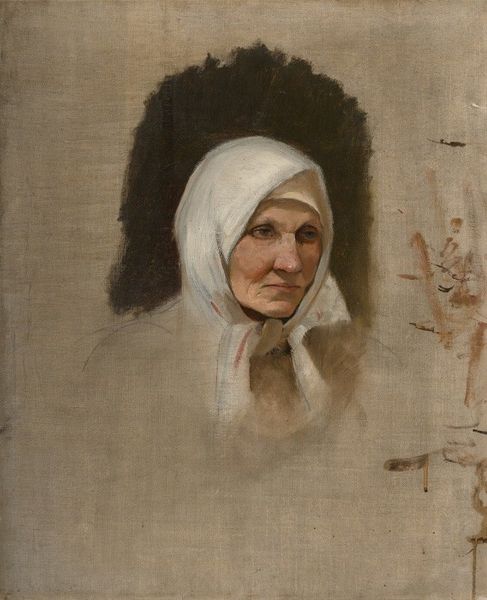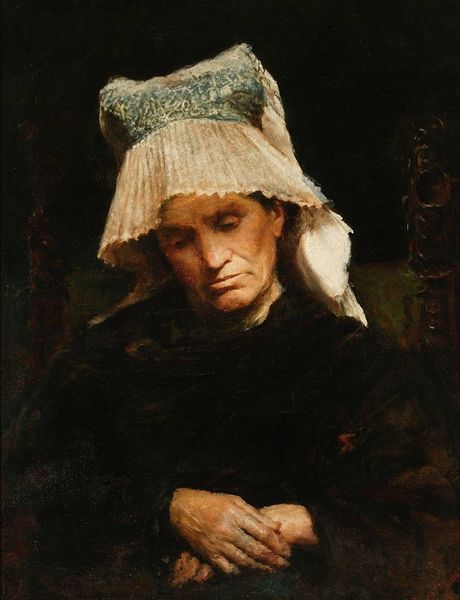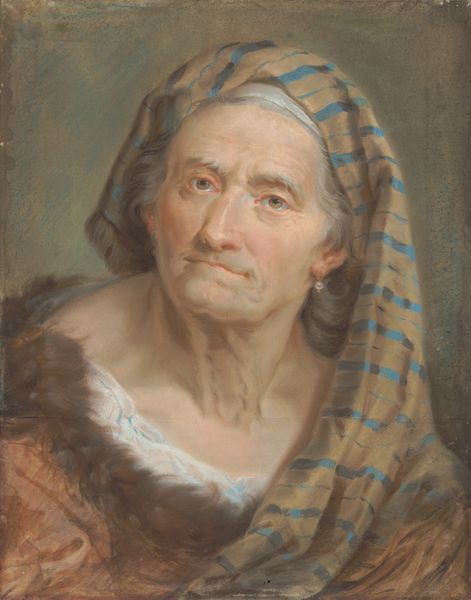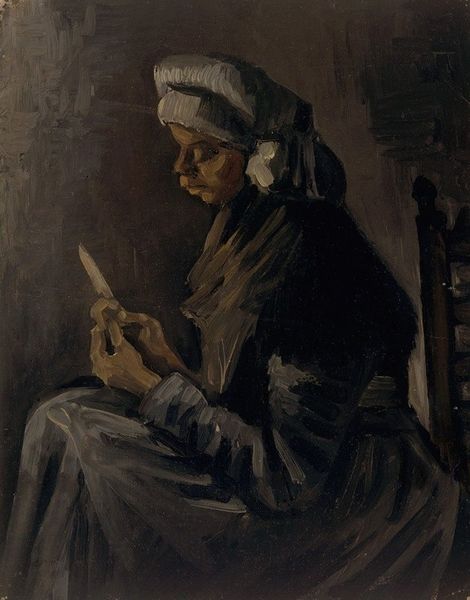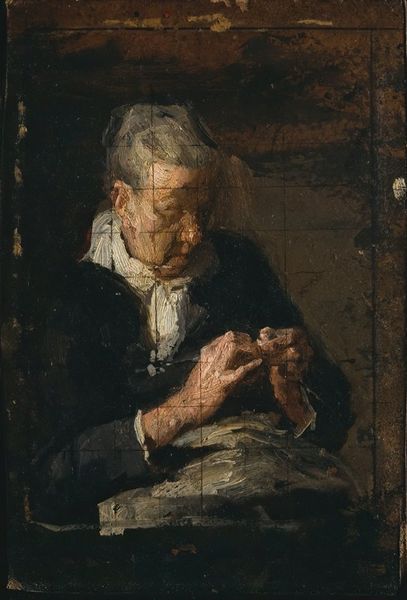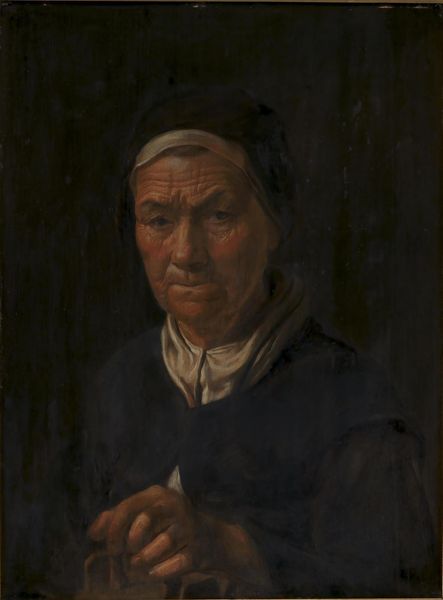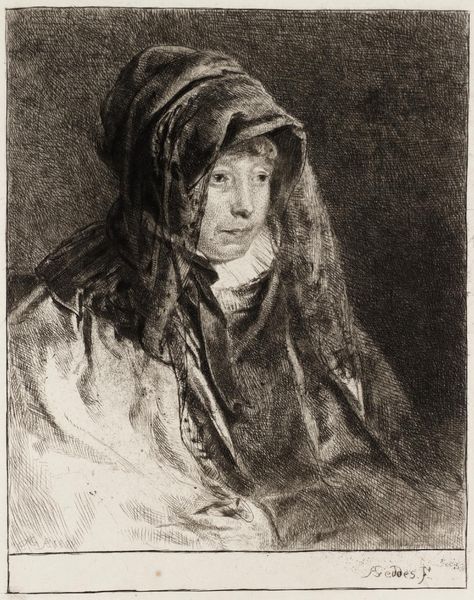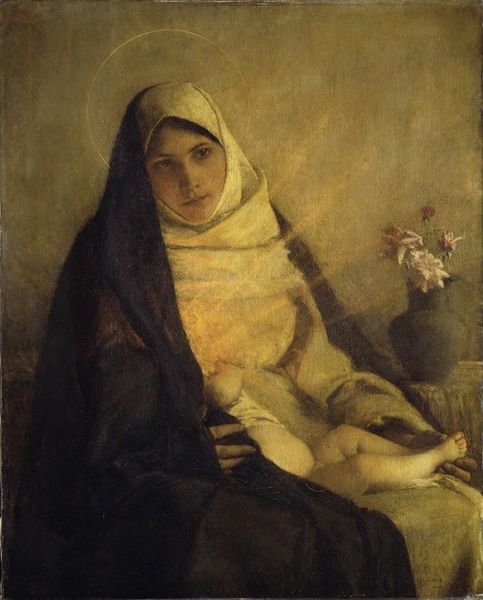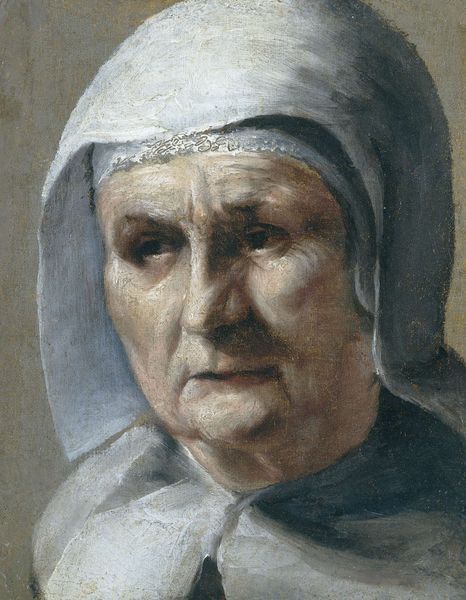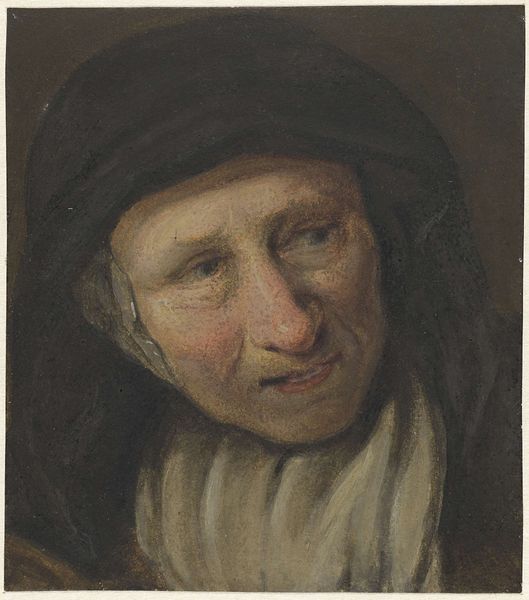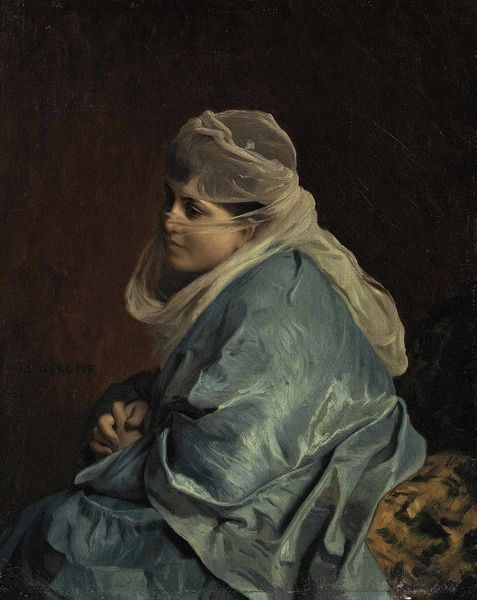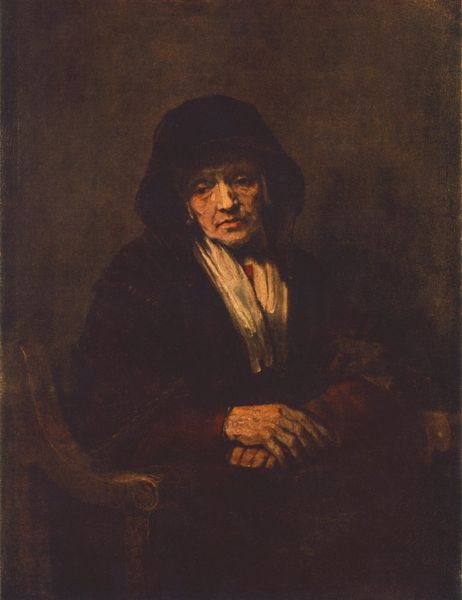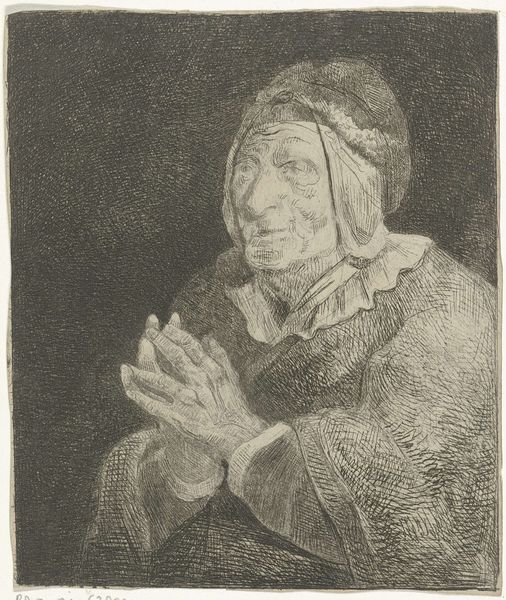
painting, oil-paint
#
portrait
#
figurative
#
self-portrait
#
baroque
#
dutch-golden-age
#
painting
#
oil-paint
#
chiaroscuro
#
realism
Copyright: Public Domain: Artvee
Editor: So here we have Rembrandt's "Head of an Aged Woman," painted sometime between 1655 and 1660 using oil paint. The mood is incredibly somber, almost haunting, don't you think? What strikes you most when you look at this piece? Curator: Beyond the technical mastery, it's the raw humanity that captivates. Rembrandt doesn’t shy away from portraying the realities of aging and the wear and tear that societal structures inflict, particularly on women. Consider the limited roles available to women of that era. Do you see that reflected in her gaze? Editor: I hadn’t really considered that! Now that you mention it, there's a resignation there. The weight of… expectations, maybe? Curator: Exactly. And notice how the chiaroscuro isn't just a technique, it's a narrative tool. The light illuminates her face, highlighting wrinkles and imperfections – details often erased or idealized. It demands we confront our discomfort with aging, especially within a patriarchal society obsessed with youthful beauty. How does that challenge the viewer? Editor: I suppose it forces us to acknowledge the beauty and the struggles inherent in aging, something often overlooked in art and life. It definitely complicates a simple reading of "portraiture." Curator: Precisely. And that, I believe, is the activist power of Rembrandt's realism. He elevates the ordinary, giving voice to the marginalized experiences often rendered invisible. Editor: This makes me appreciate Rembrandt’s intention so much more, understanding it through that feminist lens. It shifts my perspective entirely. Curator: Absolutely. These kinds of interpretations create opportunities for viewers to engage more thoughtfully with art.
Comments
No comments
Be the first to comment and join the conversation on the ultimate creative platform.

